Training at home in the form of bodyweight training is more popular than ever. The triumph of bodyweight training began in 2011 with the best-selling Fit Without Equipment by US author Mark Lauren. Since its publication, the book has sold hundreds of thousands of copies. In the meantime, even pumper icons such as Arnold Schwarzenegger rely on the short but extremely effective training with their own bodyweight. This form of training is by no means a new invention. Quite the opposite! Before Jack LaLanne opened the first modern gym in San Francisco in 1936, your own body was the number one training tool. However, due to the gym craze, this training partner was forgotten for a long time. But that's over now!
In this article you will learn everything you need to know about training at home with the bodyweight. Learn about the advantages of this form of training and get an overview of the differences to "classic" strength training. In addition, we'll give you tips on how to keep up your training motivation and we'll tell you how often you should train at home. Finally, we'll introduce you to some useful tools for your workouts as well as some effective bodyweight exercises. We hope you enjoy reading and have an effective workout at home!
These are the advantages of bodyweight training at home
- Time saving: Pumping at the gym always takes a certain amount of time: before you can leave for the studio, you have to pack your things; once you arrive at the premises, you might fight with other pumpers for a parking space; only after you have changed in the locker room, you can start your workout. However, your peers also want to use the equipment. This means that your sports program will take a good two hours. If you do your workout at home, the time component is unnecessary! You don't have to pack your bag or share the equipment with others. Instead, you can start your program immediately.
- Money Savings: There are monthly fees for gym memberships. Your at-home workout, on the other hand, is completely free! The only costs you may incur are for your equipment.
- Maximum functionality: All Bodyweight exercises address several muscle groups and are not as "artificial" as movements on fitness equipment. Thus, the workouts are very useful for everyday life and other sports.
- Low risk of injury: Other sports activities and especially free weight training carry a high potential for injury if the movements are performed incorrectly. This risk is generally lower when training at home with the Bodyweight, as the body structures are not subjected to more stress due to additional weights.
- Effectiveness: As already mentioned, a bodyweight exercise always targets several muscles. This results in a high training effectiveness and a high calorie consumption.
- Improved posture: Bodyweight exercises address not only the superficial muscles, but also the deep muscles. Since the body tension must be maintained the entire time, these muscles are also trained, resulting in a generally better body tension and posture.
- Improved coordination: The intensity of bodyweight exercises is usually increased by putting your body in an unfamiliar position (e.g. transitioning from squats to single-leg squats). Since your body has to learn the new movements, training at home improves your coordination.
Training at home - the advantages at a glance
1) Bodyweight training saves time and money.
2) You are independent and decide when, where, what and how you want to train.
3) The effects are great, but the risk of injury is low.
4) Both surface and deep muscles are strengthened.
5) The exercises prepare you for other sports (keyword functionality).
By the way: You need only little space for bodyweight training at home. After all, you don't need to set up a weight bench or other extensive equipment.
Training at home vs. strength training in the gym
To clarify the advantages and disadvantages of bodyweight training in comparison to classic strength training, we have compared the characteristics of the training forms in the following table.
| Characteristics | Bodyweight training at home | Conventional strength training |
| Muscle growth | Yes, but not as pronounced as with "iron eating | Depends on the chosen resistance |
| Possible training resistance | Body weight limits resistance However: increase by changing body position or by using fitness bands |
Free weights, machines and traction devices allow the resistance to be adjusted in small increments |
| Effects on the joints | Extremely easy on the joints, regardless of the complexity of the movement | The use of high training loads puts a lot of stress on the joints in the long run |
| Training safety | Particularly high Assistance for beginners only recommended for particularly demanding exercises (e.g. handstand push-up) |
Especially when using free weights: high movement control required and therefore increased risk of injury |
| Effects on hormone balance | No scientifically substantiated findings However: positive influence on body fat, blood pressure and other body functions |
Significant change in testosterone levels and other (stress) hormones |
Can you build muscle with dead weight exercises?

A common belief is that you can't build muscle with at-home bodyweight training. Take a look at a calisthenics athlete and it quickly becomes clear that this is a misconception! As the above table shows, the possibilities are somewhat (!) limited compared to classic strength training. With the latter, you have the possibility to gradually adjust the training resistance in order to always train in the optimal areas, i.e. to set the optimal stimuli for muscle building.
When training at home, on the other hand, you can vary the intensity by increasing the number of repetitions or by changing the position of your body (for example, moving away from double-arm push-ups to single-arm push-ups). This results in the fact that you need longer to build muscle with bodyweight training than with free weights. However, bodyweight training also works the deep muscles, which in turn has advantages in terms of functionality and posture.
Tip: For a muscular, strong, healthy body, we recommend that you combine the two forms of training. That is, incorporate both bodyweight and classical strength training exercises into your training plan workout plan. And while we're on the subject of training schedules....
Training at home - how often should you train?
How many workouts you should do per week depends primarily on your individual requirements (e.g. training experience) and your training goals. If you are a beginner in training at home, you should take it easy and train two to three times a week at the most; if you are already advanced, you can train four to five times a week. Keep in mind, however, that your body - and also your mind - always needs enough recovery from a session. This is the only way to achieve the desired training effects and to be fit enough to perform at your best during the next workout.
Training at home - that's how you stay motivated!

Especially beginners sometimes find it difficult to stick to the training routine. However, this is enormously important so that your body can adapt to the stresses and respond to them with positive changes. The following tips will help you keep up your workout routine at home for the long haul.
Tip No.1: Do not overdo it
Before you start bodyweight training, think about what your status quo is and where you want to go. Set realistic goals and divide the path into small stages. This way, you can reward yourself when you reach intermediate goals to keep you motivated. Such a reward can be, for example, a shopping trip, a spa day or a visit to the cinema. You won't do yourself any favors by setting your goals too high, as you may never reach them or only reach them very late.
Listen to your body!
If you start training at home, you would prefer to train every day. The danger here is that you ignore sore muscles and other exhaustion signals from your body. Always ensure sufficient regeneration between two training sessions! This way you will not only reach your intermediate goals faster, but you will also have more fun training.
Note: A good, i.e. active regeneration after the sport and training breaks are just as important as the workouts themselves. And not only because your muscles grow during the rest periods.
Train in a variety of ways!
Perhaps the most important tip for not losing the desire to train at home is variety. Always look at your body as a whole and train not only the so-called discom muscles, but also the legs and various other areas of the body. For each muscle, you should have several exercises ready to incorporate into your training plan.
Remember: Different exercises for one and the same muscle group will make your workout more fun. Train holistically to avoid physical imbalances.
Training at home = training in your own gym

If you have enough space, it can be worthwhile to set up a gym or fitness corner. Here are pull-up bar and kettlebells are always ready and don't have to be taken out of the closet. Design your training area as you wish and thus ensure even more motivation when training at home!
By the way: A fixed training corner reminds you of the regular workouts even outside of the training times. In this way, bodyweight training is anchored in your subconscious, which has been proven to have a positive effect on sports motivation.
"I'm completing a workout at home now!"
You can let friends and family in on your plan. By reinforcing to those around you that you want to work on yourself, you reduce the likelihood of follow-through and, more importantly, complete abandonment. Of course, you can also invite your "allies" to participate in your training at home.
A strong partner by your side

Even though bodyweight training does not require any equipment, you can still use it. This will not only make some exercises more effective, but will also increase your motivation. A professional, stylish "training partner" can make up for that little bit that helps you get through difficult training phases. But which equipment is actually suitable for training at home? The answer to this question can be found in the following section.
Extensive accessories for training at home
- A mat protects you from (pressure) pain when performing exercises on the floor and can give you the necessary support.
- A pull-up bar which also serves as a dip bar is perfect for a full body workout. Here you perform not only pull-ups and dips but also exercises for the biceps, the abdominal muscles and so on.
- Push-up grips maximize the effects of your push-ups by ensuring maximum stretching of the chest muscles and allowing various grip widths.
- Likewise, you can perform your push-ups on so-called Parallettes perform your push-ups. These mini bars also allow you to do many other exercises.
- The Ab Roller is also known as Ab-Roller and is probably the most compact ab trainer available. Training at home with this device is extremely effective, but only conditionally suitable for beginners.
- A kettlebell (also: kettlebell ) is a ball with a fixed handle. Depending on the weight, its diameter is about 8 to 30 cm. This supposedly simple training tool is suitable for a variety of exercises (squats, deadlift, lunges, ...).
- A high quality Skipping Rope is the ideal warm-up partner for training at home. With this equipment, you really get your circulation going and prepare your muscles for the upcoming load.
- Fitness bands are not only suitable for warming up, but also offer support for pull-ups. You can also use the bands to create additional resistance during exercises like push-ups.
- Gym rings demand everything from your strength and coordination. To compensate for the unstable movements on the rings, your deep muscles have to work really hard!
The best exercises for working out at home
In this section of the post, we'll introduce you to the top Bodyweight exercises for training at home. Always perform the movements in a controlled and correct way to achieve the best possible results and avoid injuries.
Squats for bulging thighs

Squats are also known as squats (more rarely: back squats). The exercise works a variety of muscles, primarily the quad hamstring and glutes. However, the lower back as well as the abdominal muscles are also involved in the movement.
Tip: perform squats with a fitness band to increase the load.
Training at home: with pull-ups to the V-cross

Pull-ups are the most effective back exercise with your own body weight. If you do not have pull-up bar If you don't have a pull-up bar, you can alternatively perform the movement on a large door frame, a wooden beam or similar. And if you can't manage too many pull-ups yet, a pull-up band Support.
Ring Rows as an alternative to Pull-Ups

Rowing with rings or on the sling trainer (so-called ring rows) is perfect as preparation for your first pull-up. The main reason for this is that the exercise targets the same muscle groups and has a very similar movement pattern. The advantage of the Ring Rows is that you are not hanging freely from the pull-up bar, which makes it much easier to perform.
Dips for a bulging chest

Dips are THE chest exercise for training at home par excellence. You have to use an enormous amount of force to keep your body weight on the dip bar upwards on the dip bar. Thus, you bring your chest muscles as well as your triceps to burn so right. If dips - which can alternatively be performed on a chair or similar - are still too difficult for you, you should use a fitness band to the assistance.
Click here for our dip and pull-up bars!
[product="P-00012"]
Training at home: push-ups

When it comes to strengthening your chest, push-ups are of course a must. Although many claim that you can not train effectively with this exercise, because push-ups are too easy. However, most people who claim this are simply doing the exercise incorrectly. Performed correctly, push-ups are an excellent way to replace chicken breasts with two neat packages. To protect your wrists and for an additional training effect we recommend you to use Push-up grips.
Lunges for a crisp buttocks

Even without any equipment you can effectively train your legs and butt. Perform lunges to strengthen primarily the gluteal muscle and the leg extensor. In addition, the leg flexor is also used in this exercise.
Workout at home with burpees

Burpees are also known as push-up jumps. This term already suggests that this is a high-intensity exercise. Burpees combine squats with push-ups and the squat jump. Thus, various large muscles (back, abdomen, thighs, buttocks) are worked simultaneously. The shoulders and arms are also used. The push-up jump is an excellent full-body exercise!
The mountain calls

The Mountain Climber is a combination of push-ups and alternating jumps. In addition to the abdominal muscles, it primarily works the large gluteus, leg biceps, and four-headed hamstring.
Training at home: curls with the fitness band

You think you can't build a bulging biceps without dumbbells? You're very much mistaken! Clamp a fitness band under your feet and perform curls with your arms. This way you strengthen the short and long head of the biceps as well as the arm flexor.
Triceps Press with the Fitness Band

A balanced, healthy workout at home always includes the use of agonist and antagonist. Since the antagonist of the biceps is the triceps, it is recommended to integrate the triceps press into your training plan. With this exercise you will not only strengthen your arm extensor, but also the large pectoral muscle.
Tip: Increase the load by using a fitness band over your back and fix it under your hands.
Learn more about our climatic traction bands now!
[product="P-00095"]
Training at home: Ab Rolls
The so-called Ab Rolls are an effective way to strengthen your straight abdominal muscles. Next to a Ab Rolls (see above) you can also perform the movement with a dumbbell or a barbell.
Crunches for a six-pack
Next to sit-ups, crunches are the classic abdominal exercise. And not just in bodyweight training at home, but in strength training in general. Compared to sit-ups, the exercise has the advantage that it does not put as much strain on the spine.
Knee lift or leg raise

With leg raises or knee raises on the pull-up bar you train your abdominal muscles and thanks to abdominal loops you can fully concentrate on your ab workout without having to worry about losing grip strength.
Check out our ab workout straps here!
[product="P-00900"]
Swing yourself fit!
The Kettlebell Swing, as you probably already guessed, is performed with a kettlebell. This movement is an extremely effective full-body exercise that will help you build your strength as well as your endurance, flexibility and explosiveness.
Workouts at home - summary
Now you're all set to get started with bodyweight training at home! In this article you got an overview of the advantages of the training form and its differences to conventional strength training. You now know how to maintain your training motivation even in difficult phases. And you now know some effective exercises and useful equipment for your training at home. We hope you have fun training and enjoy varied workouts with your own body weight!
Do you feel like training with your own body weight at home? We have the right equipment for you!
Recommended articles:
Calisthenics or strength training with weights in the gym - which is better?
Pull-up bar exercises - we show you over 35 different exercises
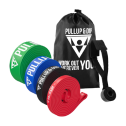
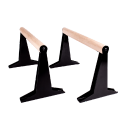
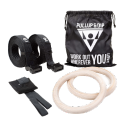



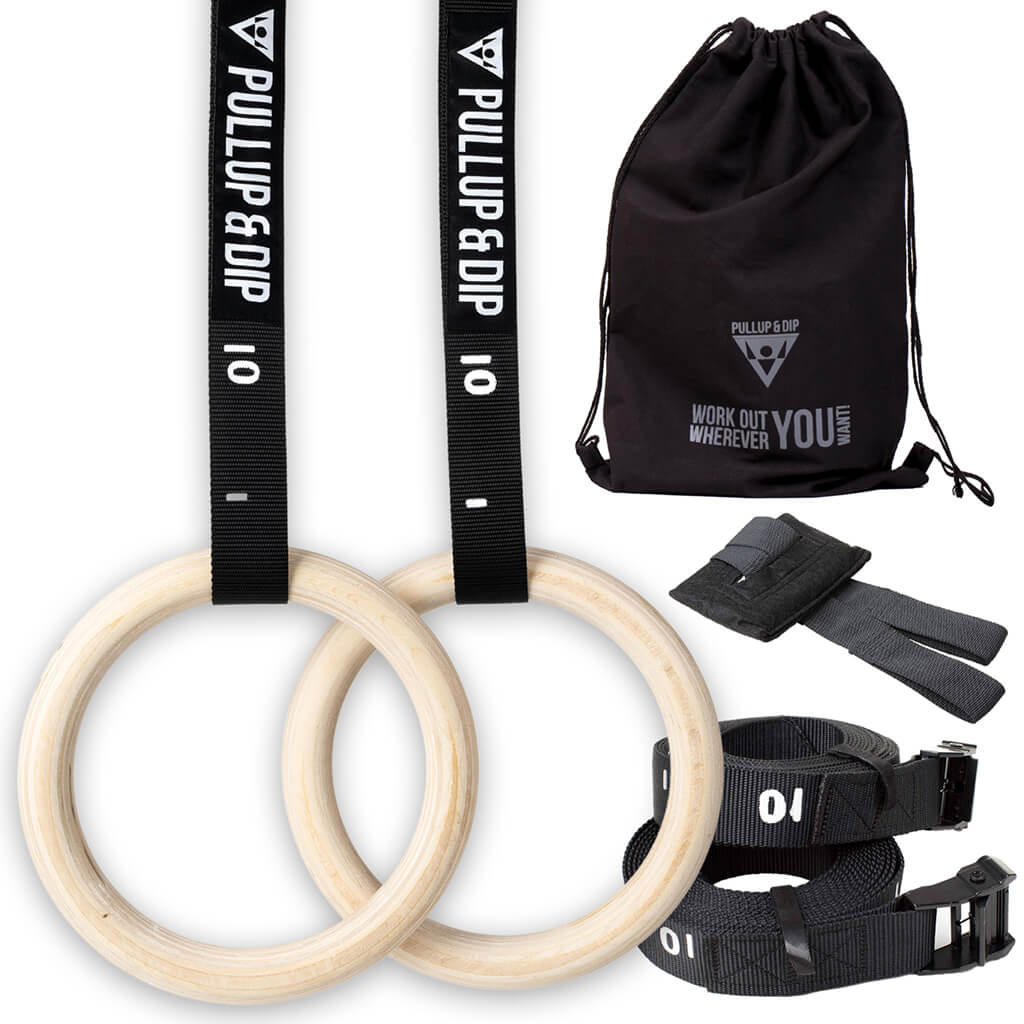
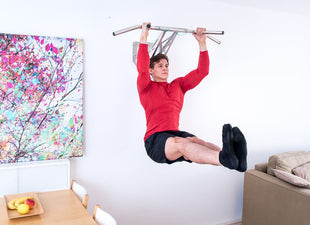
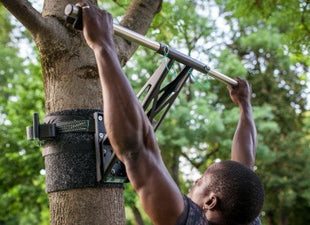
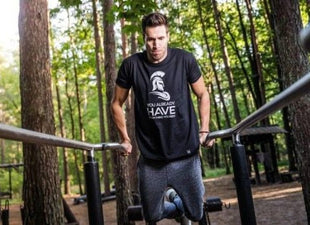
Leave a comment
All comments are moderated before being published.
This site is protected by hCaptcha and the hCaptcha Privacy Policy and Terms of Service apply.